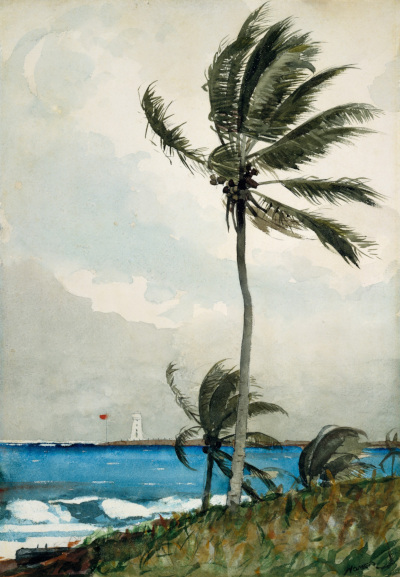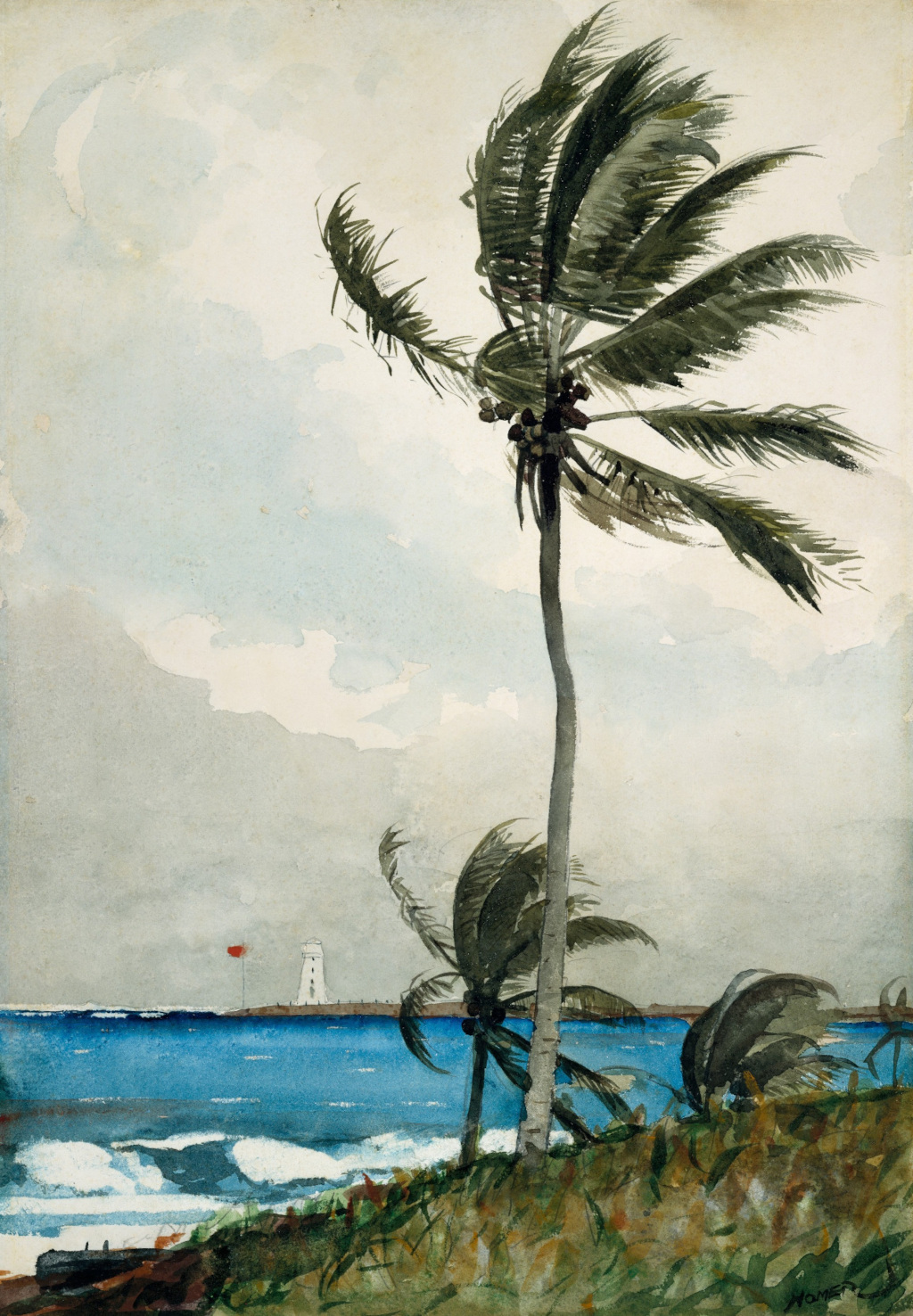Palm Tree, Nassau is a watercolour painting from 1898 which can be found at the Metropolitan Museum of Art, USA. Artist Winslow Homer would take on several different mediums within his career, having initially started off as a commercial illustrator.
The composition here is fairly simple, but carefully planned. We find a dominant palm tree in the foreground which reaches up to the top of the painting. There are then several more further behind which provide some perspective as they become shorter as we move towards the back of the painting. Homer had a tendency to lower the horizon within some of his seascapes, and then making use of long, narrow canvases. He does so here too, with the sea only coming up to about a quarter of the way up the paper. The listing provided by its owners have suggested that graphite was also used within this artwork, though watercolours were the dominant medium. The expressive sky is afforded three quarters of the background, whilst the Nassau palm tree fills almost the entire vertical of the piece. A white lighthouse can be seen in the far distance and is carefully angled just to the left of the tall palm tree in front of us. The shore line cuts across the diagonal, with some waves breaking to the left hand side. If feels like a relatively cold, windy day, with the palm tree vibrating in the wind and the sky behind being a dull light grey in tone. Homer then adds a little detail to the grass in the near foreground which slopes away to the left.
Winslow Homer would become one of the most famous seascape artists of all time, particularly within the US. He did learn much from European and Asian artists, but his style evolved into something unique to his home nation. He would tackle American topics in a manner that others would not do, and the public quickly became drawn to his work. He was not looking to impress European artists or just replicate their existing styles, but rather forge a new path that other American artists could in time follow. This was a period in which the US would rise out of the shadows of its history and start to generate a unique image of its own. Homer would travel to Europe several times in an informal capacity but he would never lose his roots within his work, and never wished to. His approach also took in other influences that were connected to his early career as a professional illustrator and he looked outside the boundaries of fine art for new ideas. This approach helped to bring a unique nature to his work and he continued to focus on American locations throughout his career.
Nassau is the capital city of the Bahamas. Homer would travel to the Caribbean several times and used the region as an inspiration for many paintings. As well as featuring the US in most of his career, other neighbouring regions would also appear from time to time. He became interested in ships, boats and even shipwrecks in later life. This helped to bring a further level of uniqueness to his work, as few would work in this manner in the late 19th century. He was not someone to follow the fashions of the day, but rather forged his own path. He would later include figurative work in dramatic scenes at sea, which was just a small extension for his earlier seascapes. In the case of Palm Tree, Nassau, however, he is clearly offering a more tranquil summary of this region. Homer remains one of the most appreciated artists from the 19th century and he provided an interesting combination of illustration, oils and watercolours for local US themes.





